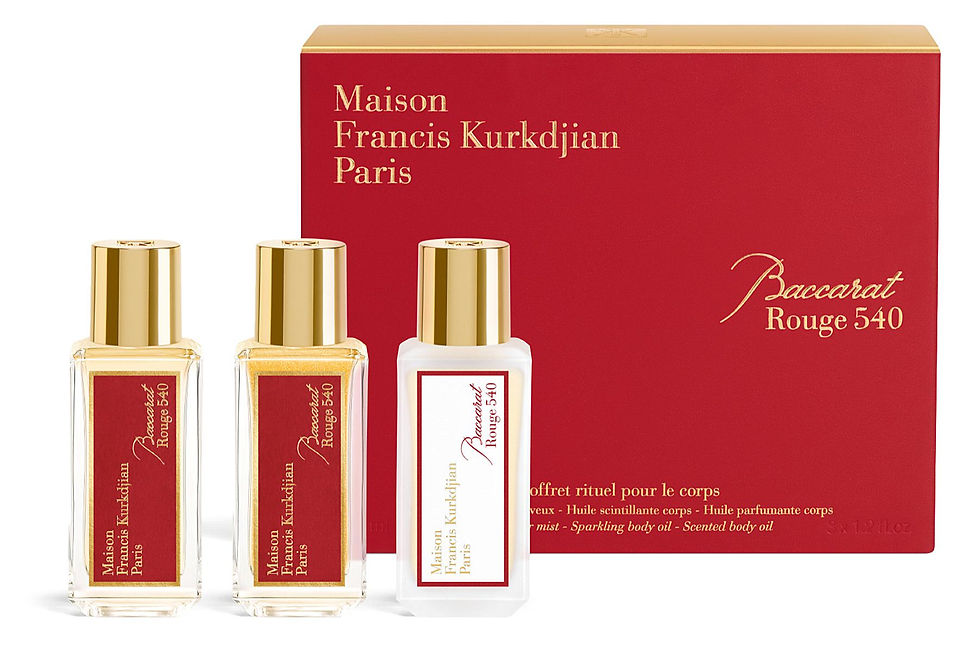Venice Simplon-Orient-Express Review — Venice to Paris Route
- Faye Bradley

- Jun 28, 2025
- 4 min read
Updated: Sep 12, 2025
All images courtesy of CSP Times.
It’s 5:45 a.m. and I'm somewhere in the French countryside when I peel back my eye mask and slide aside the silken blind. Just hours earlier, I had been in my suite at the Venice Venice Hotel — its polished marble foyer still hushed and smelling faintly of jasmine — before summoning a water taxi to Santa Lucia station.

Now, aboard the Venice Simplon‑Orient‑Express, dawn’s first tendrils reveal rolling French pastures — emerald fields dotted with cottages, their rooftops still hazy with mist. The air carries the buttery promise of golden croissants, courtesy of Astrid, our indefatigable butler. The familiar, gentle sway of the train has lulled me from dreams of Vermeer to waking reality, and I press my cheek against the cool window pane to soak it all in.

A Legacy Laid in Steel and Steam
Before boutique hotels came with mood lighting and biometric room keys, before business class offered champagne on takeoff or “slow travel” became an Instagrammable mantra, there was the Orient Express — rolling proof that glamour and grit could share the same track. The carriages of today’s Venice Simplon-Orient-Express, crafted between 1926 and 1949, are time capsules of 20th-century Europe, echoing with secrets of monarchs in exile, wartime intrigue, and marquetry marathons.

Resurrection by Relic Hunters
From the snowbound drama of Sleeping Car 3309, which inspired Agatha Christie’s most famous plot, to the Art Deco dining cars aglow with Lalique glass and caviar dreams, every bolt and banquette tells a story. Resurrected in the 1980s by American entrepreneur James Sherwood, the train was brought back to life carriage by carriage, artisan by artisan. Sherwood enlisted master marqueteur Bob Dunn — whose grandfather had worked on the originals — and commissioned René Lalique’s great‑grandson to recast the famed glass panels for the Côte d’Azur dining car. In 1982, amid global fanfare, the Venice Simplon‑Orient‑Express re‑emerged: a Belle Époque time machine, humming with nostalgia.
Today, its Grand Suites, bespoke Suites, and Historic Cabins offer a kind of luxury that can’t be mass-produced: the thrill of watching the European countryside flicker past while perched in a velvet armchair with a Negroni in hand.
Each winter, the train returns to its French or Italian depot for a ritual strip‑down. Craftsmen journey from Burgundy’s lacquer studios to Murano’s glass furnaces, hand‑clean every Chinese lacquer panel, buff brass fixtures back to their 1929 shine and overhaul the mechanical innards with Swiss‑watchmaker precision.
We stayed in a suite named La Compagnie. By day, its banquette converts into a plush sofa; by night, two twin beds or a double, swathed in cotton percale. The marquetry — walnut, sycamore, ebony — gestures to the Alps we’ll soon cross. Chrome sconces curve like railway tunnels; frosted‑glass panels by Lalique filter soft afternoon light. The private marble‑clad bathroom’s mosaic floor mimics ripples on a Venetian lagoon.

On this journey, I travel with my mother, and in Bar Car 3674 — where a pianist drifts through Duke Ellington — our paths cross with a British pair on their own bucket‑list adventure. Over flutes of Veuve Clicquot, we swap stories of far‑flung road trips and dusty libraries.
Dining aboard the Simplon‑Orient‑Express is an exercise in theatrical precision. We begin in our suite with delicate smoked salmon bites and devilled eggs, the gentle clatter of the rails a subtle accompaniment. Lunch follows in L’Oriental, where sleek black lacquer reflects the midday light as we savour tuna tartare dressed in basil and cucumber, veal fillet with morels, and a flambéed strawberry and vanilla Baked Alaska.
Afternoon tea returns us to the suite with a refined mix of sweet and savoury morsels, before dinner in L’Étoile du Nord, its intricate marquetry setting the stage for green asparagus with citrus and aubergine caviar, sea bass bathed in champagne sauce, and a molten chocolate cake that lingers long after the last bite. Morning breaks with a simple yet elegant breakfast of fresh pastries, fruit, and coffee, leading to brunch — scrambled eggs crowned with caviar, scampi ravioli in bisque, tender greens, and a warm tarte Tatin finished with vanilla ice cream.
Between courses, we drift back to the bar car or admire the scenery from our suite.
READ: Saint James Paris: Where French Romanticism Meets Design Precision in the City’s Only Château-Hotel

In less than two days, we traverse four countries: Italy’s sun‑drenched plains, Switzerland’s glacier‑tipped peaks, Liechtenstein’s alpine shortcuts, Austria’s whispering forests, then back into France’s quilt of vineyards. I brought books — thrillers, memoirs — but found the window views more compelling than any paragraph.
When, at last, the train curves onto Paris’ Gare Du Nord, you feel both exhilarated and wistful. How could 25 hours yield so much wonder? The Venice Simplon‑Orient‑Express never rushes, nor does it skimp on detail. It invites you to unshackle from Wi‑Fi, to take in each bite, each clink of crystal, each passing village.
In the end, the greatest luxury isn’t speed or convenience. It’s the chance to travel deliberately — through time, through history, and through shared memories that linger long after the journey ends.





.png)







































Comments